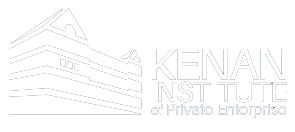Proceed with Caution in Reopening Public Schools
Despite advocacy from governmental officials and parents alike, we urge caution in the reopening of public schools before the coronavirus pandemic is fully under control. We are especially concerned about the premature re-opening of schools in impoverished and flood-prone urban and rural environments.
White Paper by James H. Johnson Jr., Ph.D, Jeanne Milliken Bonds, MPA
Kenan-Flagler Business School UNC-Chapel Hill
Allan M. Parnel Vice President, Cedar Grove Institute for Sustainable Communities Mebane, NC
February, 2021
ABSTRACT
Despite advocacy from governmental officials and parents alike, we urge caution in the reopening of public schools before the coronavirus pandemic is fully under control. We are especially concerned about the premature re-opening of schools in impoverished and flood-prone urban and rural environments. Years of deferred maintenance and infrastructure damage from adverse weather events have saddled schools in such areas with legacy pollutants and poorly functioning HVAC systems, making them potential hot beds for the next wave of coronavirus infections. To fix the so-called “sick building” problem, we outline a strategy that creates both business and job opportunities for the people who live in communities where the threats undergirding school re-openings are greatest.
Preamble
The push to reopen public schools in the midst of the ongoing coronavirus pandemic has cast new light on a critical and long-standing environmental justice issue in our state and the nation (GAO, 2020). While we continue to struggle to control the spread of the deadly virus (Johnson, Bonds, & Parnell, 2021a, b), including new variants, the critical question is can we safely reopen public schools, especially those where legacy pollutants and infrastructure damage from adverse weather events constituted major health risks prior to the COVID-19 pandemic?
We are extremely skeptical about our ability to reopen some of our public schools safely. Below, we outline the reasons for our skepticism and propose a set of strategies to address the problem and, in the process, circumvent another potential wave of coronavirus infections, hospitalizations, and deaths.
Critical Background and Context
Research has confirmed the existence of a sick building syndrome that is disproportionately concentrated in low wealth and predominantly minority school districts and communities (National Center for Education Statistics, 2014). Far too often, children attending and staff working in these schools report a host of buildingrelated illnesses believed caused by:
- Heating, ventilation, and air condition systems that do not effectively distribute air to people in the building;
- Chemical containments from indoor sources such as adhesives, carpet, upholstery, manufactured wood products, copy machines, and cleaning agents;
- Chemical contaminants from outdoor sources such as air entering the building from motor vehicle exhaust (especially school buses), plumbing vents, and building exhausts; and
- Biological contaminants including bacteria, molds, pollen, fungus, and “viruses that breed in stagnant water and may have accumulated in ducts, humidifiers and drain pans, or where water has collected on ceiling tiles, carpeting, or insulation”. Insect and bird dropping also can be a source of biological contamination (EPA, 1991; Joshi, 2008; Love, 2018).
These problems are due in large measure to delayed school building maintenance, which is a major problem in both low wealth communities with an inadequate tax base to fund major repairs and states that refuse or fail to fund public schools adequately. According to the 2016 State of Schools Report, “state and local governments spend $46 billion less than what is required to update and maintain their school facilities” (Filardo, 2016).
With an airborne virus like Covid-19, the concern is that schools that are already crucibles for building related illnesses may become the next hot spots for the further spread of the deadly disease. Not to mention, in addition, the potential long-term adverse health effects on children and school staff that survive their exposure to the virus.
Ensuring that ventilation systems operate properly, according to the CDC (2021), is “a key consideration for schools seeking to reopen amid the COVID-19 pandemic.” In a recently released report, the GAO (2020) “estimated that 4 in 10 [school] districts need to update or replace Heating, Ventilation, and Air Conditioning (HVAC) systems in at least half of their school buildings, which it projects to affect 36,000 schools buildings nationwide.” Most of these schools with aging and poorly functioning HVAC systems are located in low wealth and minority neighborhoods and communities.
Nowhere is this concern about reopening public schools more relevant or germane than here in the state of North Carolina. Research confirms that black and brown children face a triple whammy of geographic disadvantages (Johnson, et.al. 2016). They tend to be concentrated disproportionately in counties and school districts where there is inadequate political and/or financial support for their education (936,000 or 41% of all students); and in neighborhoods characterized by hypersegregation (944,000 or 41% of all students) and concentrated poverty (433,000 or 19% of all students) (see Figure 1 and Table 1). Moreover, many of these young people live in multigenerational—and often overcrowded–households, known sources of potential coronavirus transmission (Johnson, Bonds, and Parnell, 2021b).
Making matters worse, students in these triple whammy communities often attend schools with the types of aging and rapidly deteriorating infrastructure that pose a risk to their health and wellbeing. In addition, more often than not, school-based supports — including access to nursing services — are insufficient to address the students’ physical and socio-emotional development needs, a situation exacerbated by elected officials’ refusal in some states to expand Medicaid (Copeland, 2020).
A 2016 Survey of school facility needs in North Carolina reportedly revealed that the state “needed to invest more than $8 billion in North Carolina schools by fiscal year 2020-2021” (McHugh and Nordstrom, 2019). Slightly over half (55% or $4.4 billion) is required to cover new school construction ($2.8 billion) and additions to existing schools ($1.6 billion) in mainly urban areas experiencing rapid population growth. Nearly all of the balance ($3.1 billion or 45%) is required to pay for urgently needed renovations of existing aging and rapidly deteriorating school buildings in mainly rural and low wealth counties in the state (McHugh and Nordstrom 2019).
Addressing the Problem: A Proposed Strategy
We have a general sense of the repair needs and, by extension, the magnitude of the sick building problem in the state’s public school system. We also have data on the age of all school buildings, whether they have been renovated, and if so, the type of renovations that have been done and when they were done. In addition, the U.S. Environmental Protection Agency has outlined investigative procedures to assess the magnitude of the sick building problem at the local school building level (EPA, 1991). The steps include—assuming the building is not deemed beyond repair and thus a target for demolition– indoor air quality investigations; air sampling for contaminants; pollutant source removal or modification; installation of particle control or air cleaning devices; and increasing ventilation rates and air distribution to align with ventilation standards in building codes. In addition, there now exists a host of app-based monitoring solutions to assess the indoor environment of schools and other institutions.
Moreover, the sick building problem in our public schools creates a propitious opportunity to create economic justice though efforts to solve a pressing environmental justice problem (Johnson, 2019a). That is, properly conceived and executed, we can create both business and employment opportunities for historically marginalized populations not only to address the problem but also to transform schools, especially those in environmental justice communities, into green facilities that enhance learning and overall health and wellbeing of both students and school staff.
To do so will require first, a clear delineation and articulation of the supply chain of industries and occupations that are required to provide the requisite goods and services to solve the sick building problem in our public schools (Johnson, 2019b). The next step is to identify goods and services school district-based staff will provide; and which ones that will be outsourced to private sector contactors and vendors. For outsourced good and services, the Department of Public Instruction (NCDPI), in consultation with the Department of Environmental Quality (NCDEQ), should work with the state’s Historically Underutilized Business (HUB) office in the Department of Administration (NCDOA) to publicize the relevant contracting and procurement opportunities; and to educate, train, certify, and prequalify both aspiring entrepreneurs and established businesses for these opportunities.
Investing in a state-of-the-art, fully automated, inclusive supply chain management system at the state level will go a long way toward ensuring that such a collaboration works smoothly and, in the process, creates both business opportunities and employment opportunities in the very communities affected by the sick school building problem (Johnson, 2019b). Moreover, this initiative will strategically position a cadre of historically underutilized business for success in the broader transition to a green economy as the sick building problem extends well beyond schools and encompasses a host of other public and private sector buildings in our state.
Concluding Thoughts
We should proceed with extreme caution in reopening public schools in impoverished districts with legacy pollutants and poorly functioning HVAC systems. Ignoring the sick building problem and failing to purse recommended ameliorative actions constitute yet another potential crisis that, unfortunately, will adversely affect one of our state’s most precious resources: our children.
About the Authors
James H. Johnson, Jr. is the William Rand Kenan, Jr. Distinguished Professor of Strategy and Entrepreneurship in the Kenan-Flagler Business School and Director of the Urban Investment Strategies Center in the Frank Hawkins Kenan Institute of Private Enterprise at UNC-Chapel Hill.
Jean Milliken Bonds is a Professor of the Practice, Impact Investment and Sustainable Finance in the Kenan-Flagler Business School and the Department of Public Policy at UNC-Chapel Hill.
Allan M. Parnell is a Senior Research in the Kenan Institute’s Urban Investment Strategies Center and Vice President of the Mebane, NC-based Cedar Grove Institute for Sustainable Communities.
The Kenan Institute serves as a national center for scholarly research, joint exploration of issues, and course development with the principal theme of preservation, encouragement, and understanding of private enterprise.
References Cited
CDC, 2021, Operating Schools during COVID-19: CDC’s Considerations, February 3, available at https://www.cdc.gov/coronavirus/2019-ncov/community/schools-childcare/schools.html
Cherney, Kristeen, 2018, Sick Building Syndrome, Healthline.com, September 18, available at https://www.healthline.com/health/sick-building-syndrome
Copeland, Lindsey, 2020, Kaiser Family Foundation Examines How Communities are affected by Lack of Medicaid Expansion, Medicare Rights Center, available at https:// www.medicarerights.org/medicare-watch/2020/01/16/blog-kaiser-family-foundationexamines-how-communities-are-affected-by-lack-of-medicaid-expansion
EPA, 1991, Sick Building Syndrome, Indoor Air Facts No. 4, United States Environmental Protection Agency, February, available at https://www.epa.gov/sites/production/files/2014-08/documents/sick_building_factsheet.pdf
Filardo, Mary, 2016, State of Our Schools: America’s K-12 Facilities. Washington, DC: 21st Century Fund, available at https://kapost-files-prod.s3.amazonaws.com/published/56f02c3d626415b792000008/2016-state-of-our-schools-report.pdfkui=wo7vkgV0wW0LGSjxek0N5A
GAO, 2020, K-12 Education School Districts Frequently Identified Multiple Building Systems Needing Updates or Replacements, June, available at https://edlabor.house.gov/imo/media/doc/School%20Districts%20Frequently%20Identified%20Multiple%20Building%20Systems%20Needing%20Updates%20or%20Replacement1.pdf
Johnson, James H. Jr., Bonds, Jeanne Milliken, & Parnell, Allan M., 2021a, “Urgently Needed – A Racial Equity Approach to Covid-19 Vaccine Distribution,” The Daily Yonder, January 22, available at https://dailyyonder.com/commentary-urgently-needed-a-racialequity-approach-to-covid-19-vaccine-distribution/2021/01/22/
Johnson, James H., Jr., Bonds, Jeanne Milliken, & Parnell, Allan M., 2021b, Prioritize High Risk Demographics in Vaccine Rollout, Kenan Institute Policy Brief, January 2021, available at https://kenaninstitute.unc.edu/publication/prioritize-high-risk-demographics-in-vaccine-rollout/
Johnson, James H., Jr., 2019a, Business Intelligence for Creating an Inclusive Model of Contracting and Procurement in the City of Durham, Kenan Institute of Private Enterprise White Paper, September 1, available at https://kenaninstitute.unc.edu/publication/business-intelligence-for-creating-an-inclusive-model-of-contracting-andprocurement-in-the-city-of-durham/
Johnson, James H., Jr., 2019b, How Environmental and Economic Justice Work Together,” Triangle Business Journal, October 3, available at https://www.bizjournals.com/triangle/news/2019/10/03/columnhow-environmental-and-economic-justice-work.html
Johnson, James H., Jr., Dr. Martin Luther King Jr., America’s Non-white Youth, and the Triple Whammy of Geographic Disadvantage, available at https://uncw.edu/soccrm/documents/geographicdisadvantage.pdf
Joshi, Sumediha M., 2008, The Sick Building Syndrome, Indian Journal of Occupational & Environmental Medicine, August, , available at https://www.ncbi.nlm.nih.gov/pmc/articles/PMC2796751/
Love, Shayla, 2018, Sick Building Syndrome: Is it the buildings or the people who need treatment?, Mosaicscience.com, April 30, available at https://mosaicscience.com/story/sick-building-syndrome-buildings-or-people/
Martin, David S., 2012, Are Schools Making Kids Sick? CNN.com, January 14, available at https://www.cnn.com/2012/01/14/health/school-indoor-air-pollution/index.html
McHugh, Patrick and Nordstrom, Kris, 2019, “Make Space for Learning: Current Options to Meet North Carolina’s School Facility Needs Fall Short of Sustainable Solutions,” BTC Report, March, available at https://www.ncjustice.org/wp-content/uploads/2019/03/BTC-REPORTS-School-Facility-Financing_FINAL.pdf
Mortice, Zach, 2020, How America’s Schools Got So Sick, Bloomberg CityLab, September 25, available at https://www.bloomberg.com/news/articles/2020-09-25/longbefore-covid-u-s-schools-hid-health-risks
National Center for Educational Statistics, 2014, Condition of America’s Public School Facilities: 2012-13, available at https://nces.ed.gov/pubs2014/2014022.pdf
Related Articles
Is North Carolina’s Attractiveness as a Migration Destination Waning?
Is North Carolina’s Attractiveness as a Migration Destination Waning?We are witnessing a re-balancing after the COVID migration surge or a fundamental shift in North Carolina’s attractiveness as a domestic and international migration magnet.White Paper by James H....
North Carolina at a Demographic Crossroad: Loss of Lives and the Impact
North Carolina at a Demographic Crossroad:Loss of Lives and the ImpactNorth Carolina’s phenomenal migration-driven population growth masks a troubling trend: high rates of death and dying prematurely which, left unchecked, can potentially derail the state’s economic...
WILL HURRICANE IAN TRIGGER CLIMATE REFUGEE MIGRATION FROM FLORIDA
Will Hurricane Ian Trigger Climate Refugee Migration from Florida?Thirteen of Florida’s counties were declared eligible for federal disaster relief following Hurricane Ian’s disastrous trek through the state (The White House, 2022). The human toll and economic impact...








